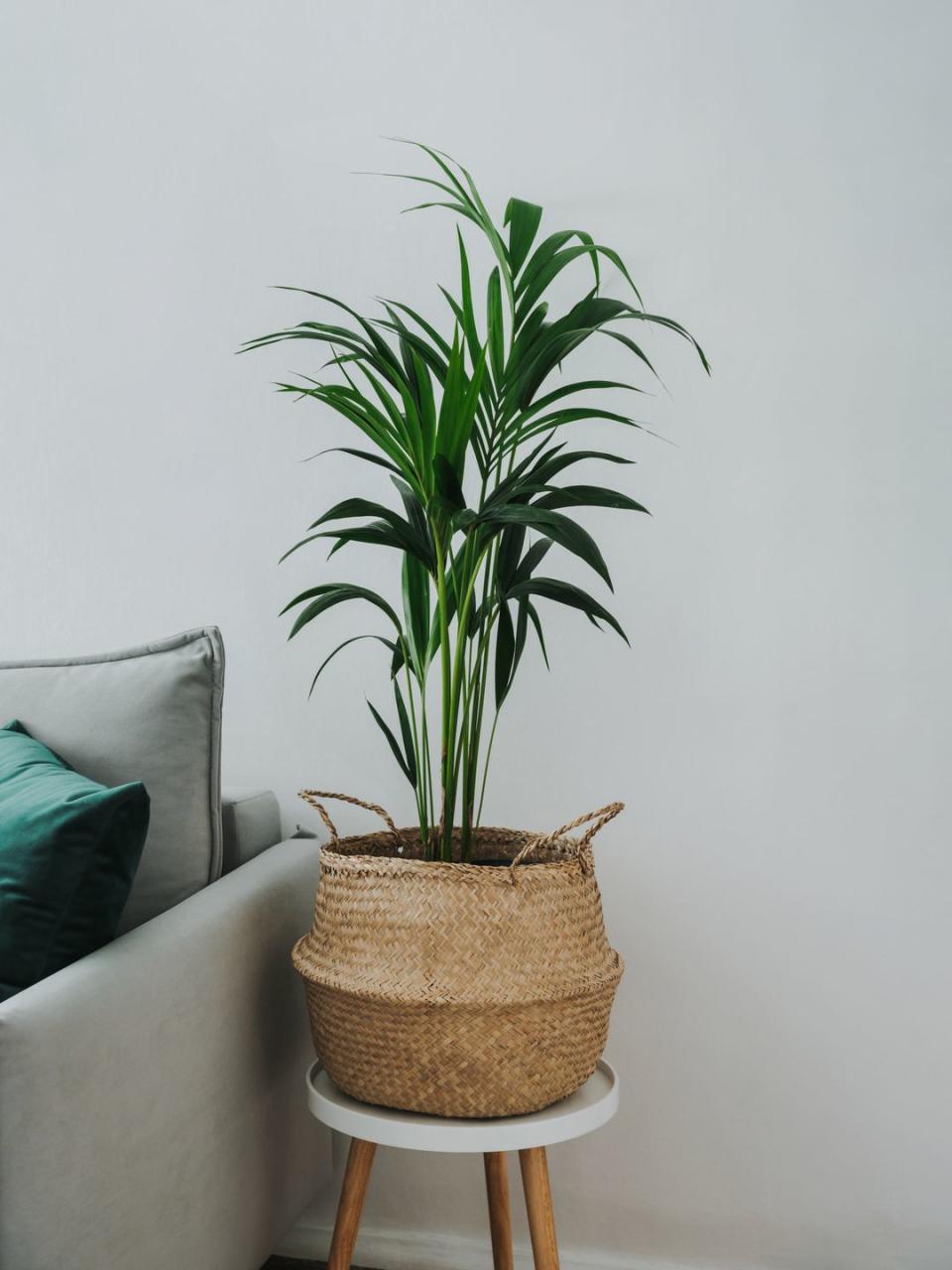Why the kentia palm is an ideal beginner plant

A kentia palm is one of the world's most popular and common indoor plants, but that doesn't make it any less desirable. This hardy plant ticks a lot of boxes if you're looking to start or build your collection of greenery. It's easy to care for, tolerant of both shade and cold, and while it's slow growing, it can reach truly impressive heights.
The Howea forsteriana or kentia palm is also called the thatch palm or palm court palm, and it has an illustrious history. It was a favoured plant of Queen Victoria, who had these plants in all of her homes. This graceful palm was also a mainstay of palm parlours of renowned hotels such as The Ritz in London and The Plaza in New York. With just a little care and attention, this leafy beauty will bless your living room, kitchen or bedroom with its distinctive arching foliage and impressive stature.
What is a kentia palm?
Kentia palms are native to the South Pacific islands and originated on Lord Howe island in Australia. They can be cultivated outside in areas with tropical conditions and warm weather, but should otherwise be considered as an indoor plant. Under the right conditions indoors, it can reach more than 10m tall.
Kentia palms are generally sold with two or three stems of the plant potted together to give a shrub-like appearance. The overall effect is of an architectural green giant with a soft, feathery edge.
Gaining popularity during the Victorian era, this palm plant became a popular collector's item, partly because it thrived in conditions usually considered poor. It can tolerate low temperatures, poor light, bad air quality and low humidity. And, thanks to its associations with royalty (Queen Victoria even left instructions for kentia palms to be placed around her coffin while she lay in state) and the fact that they were fairly expensive to buy, these palms gained a certain lofty status in society. They continue to be popular today all over the world.
The kentia palm at a glance:
Botanical name: Howea forsteriana.
Other names: Kentia palm, forster sentry palm, thatch palm, palm court palm, sentry palm, paradise palm.
Height and growth rate: Slow growing and tall, with an approximate maximum indoor height of 10m, and plenty higher outdoors.
Light: Prefers indirect light. Does well in a shady spot, although more shade means slower growth.
Watering: Likes to be well-hydrated, but allow the soil to fully dry between waterings.
Temperature: It's a tropical plant, so it prefers warmer temperatures.
Toxicity to pets: Non-toxic.
Plant parent level: Beginner friendly! Very low maintenance and needs little care or attention.

How to care for your kentia palm
Light
The plant is native to a jungle-like environment, so to recreate that means ensuring your palm gets indirect sunlight. In fact, it pays to be careful when exposing your kentia palm to direct light in any way, as if they weren't acclimatised to bright, direct sunlight as a seedling, their leaves are likely to scorch. Although these plants are able to grow in low light, the foliage will be more attractive and full in filtered, soft light, so aim to put it in a spot that's light but not too light.
Watering
Sogginess is something to avoid at all costs when caring for your kentia palm. While it's important to keep the plant well-hydrated, the soil must fully dry out in between waterings otherwise the leaves of the plant could start to brown and root rot could set in. However, if the fronds develop brown tips, that could be a sign that the palm needs more water. Keep an eye on reducing the frequency of waterings during autumn and winter – but always look to your plant for guidance on what it needs.

Temperature
Think tropical! Kentia palms love warmer temperatures and plenty of humidity. This specimen is hardier than many other palms and can even survive if temperatures drop below freezing, but it will thrive the most if kept warmer. Creating a decent amount of humidity is also key, so spraying the leaves lightly with water once a week can be a nice way to give your palm what it needs. If you live in a very dry environment, a clever way to increase humidity levels for your plant is to place its pot on a tray of wet stones.
Maintenance
One of the advantages of the kentia palm is how little care it needs. Once it's established in your home, all you need to do is wipe the fronds clean of dust periodically. You don't even need to prune this palm, apart from removing dead or dying leaves. Avoid replanting unless it's absolutely necessary, as the roots don't like to be disturbed.

Common problems with a kentia palm (and how to fix them)
Annoying pests: Spider mites and mealybugs are the most common unwanted visitors to the kentia palm. To remove them, try using neem oil instead of products containing alcohol, which can dry out the delicate palm fronds.
Fertilise regularly: Kentia palms can be prone to potassium deficiencies. If your plant begins to develop necrosis on the tips of its oldest leaves, try feeding it with a controlled release potassium supplement.
Overwatering: If this plant starts to develop wilting or yellowing leaves, you may be watering it too frequently or too much. Kentia palms need a lot of moisture, but the soil must dry out fully between waterings. If you think this is the case, allow the pot to dry out before watering it again.
Don't over-prune: Make sure to remove dead and dying leaves from your kentia palm, but do it gently or you may accidentally cause permanent damage to the trunk of your palm. Forcefully removing leaves can cause irreversible scarring or create the opportunity for trunk rot disease to set in.
Follow House Beautiful on TikTok and Instagram.
You Might Also Like



